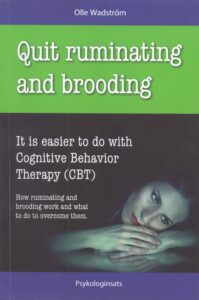 When Albert had become conditioned to be afraid of the rabbit he escaped in any way possible from his white rabbit. With his safety-behaviors, he kept his conditioned fear alive, and another thing also happened. His fear spread to other rabbit-like objects. He was frightened by a white rat, later he was frightened by a piece of white cotton waste, and even a man with a great white beard. This is called generalization.
When Albert had become conditioned to be afraid of the rabbit he escaped in any way possible from his white rabbit. With his safety-behaviors, he kept his conditioned fear alive, and another thing also happened. His fear spread to other rabbit-like objects. He was frightened by a white rat, later he was frightened by a piece of white cotton waste, and even a man with a great white beard. This is called generalization.
To apply safety-behaviors in order to escape things that scare us makes objects that are similar to what we are afraid of frightening. The fear “contaminates” things that resemble the things you were initially afraid of.
The more you try to escape from and fight your discomforting thoughts with the help of comforting thoughts, the more frightening the discomforting thoughts become, and the more often they appear. Generalization also makes new thoughts that are close to the initial thought frightening – compare the rabbit, the rat, a white piece of waste cotton and a great white beard.
The human brain also has an incredible ability to relate and connect old experiences and thoughts to ongoing thoughts. This, along with generalization, leads the contents of the discomforting thoughts to become increasingly distanced from the initial discomforting thought. The more comforting thoughts, the more imaginative the contents of the discomforting thoughts may become – even unrealistic. In the end, it is possible that you feel bad from completely illogical thoughts, even though your common sense tells you that these thoughts are not true.
The common sense in the comforting thoughts is no match for the conditioned discomfort that the discomforting thoughts automatically conjure up. You cannot fight conditioned feelings with logic and logical comforting thoughts.
Comforting thoughts make the contents of discomforting thoughts increasingly different, more fantastic and unrealistic. This is because of generalization.
This is an exerpt from the book Quit Ruminating and Brooding by Olle Wadström. Comments and discussions are encouraged.
The book is available in two similar versions. Please choose the green and black version. AuthorHouse (the white version of the book ) print and sell the book illegally.


 human beings become a burden.
human beings become a burden.